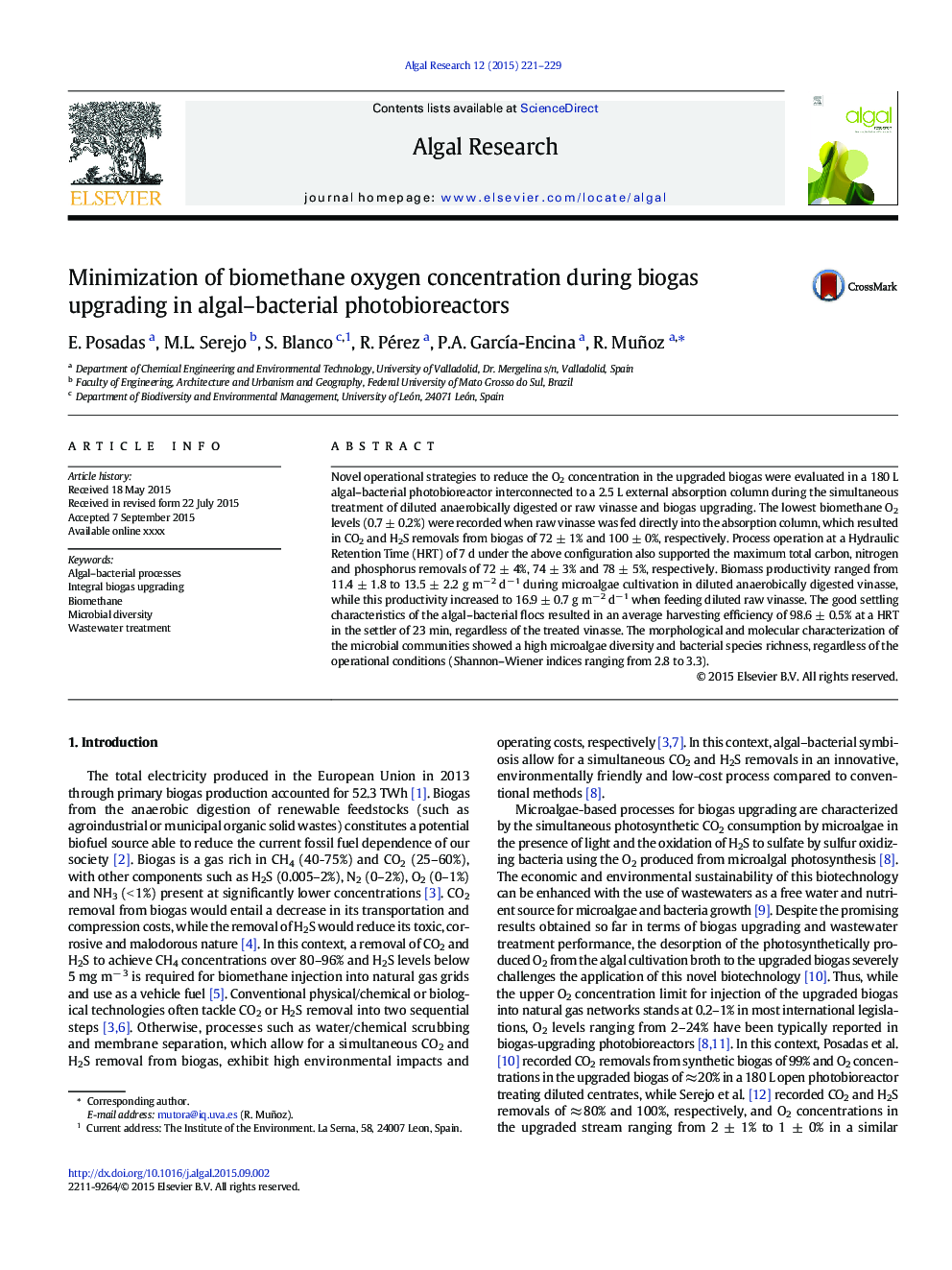| Article ID | Journal | Published Year | Pages | File Type |
|---|---|---|---|---|
| 8087643 | Algal Research | 2015 | 9 Pages |
Abstract
Novel operational strategies to reduce the O2 concentration in the upgraded biogas were evaluated in a 180 L algal-bacterial photobioreactor interconnected to a 2.5 L external absorption column during the simultaneous treatment of diluted anaerobically digested or raw vinasse and biogas upgrading. The lowest biomethane O2 levels (0.7 ± 0.2%) were recorded when raw vinasse was fed directly into the absorption column, which resulted in CO2 and H2S removals from biogas of 72 ± 1% and 100 ± 0%, respectively. Process operation at a Hydraulic Retention Time (HRT) of 7 d under the above configuration also supported the maximum total carbon, nitrogen and phosphorus removals of 72 ± 4%, 74 ± 3% and 78 ± 5%, respectively. Biomass productivity ranged from 11.4 ± 1.8 to 13.5 ± 2.2 g mâ 2 dâ 1 during microalgae cultivation in diluted anaerobically digested vinasse, while this productivity increased to 16.9 ± 0.7 g mâ 2 dâ 1 when feeding diluted raw vinasse. The good settling characteristics of the algal-bacterial flocs resulted in an average harvesting efficiency of 98.6 ± 0.5% at a HRT in the settler of 23 min, regardless of the treated vinasse. The morphological and molecular characterization of the microbial communities showed a high microalgae diversity and bacterial species richness, regardless of the operational conditions (Shannon-Wiener indices ranging from 2.8 to 3.3).
Related Topics
Physical Sciences and Engineering
Energy
Renewable Energy, Sustainability and the Environment
Authors
E. Posadas, M.L. Serejo, S. Blanco, R. Pérez, P.A. GarcÃa-Encina, R. Muñoz,
